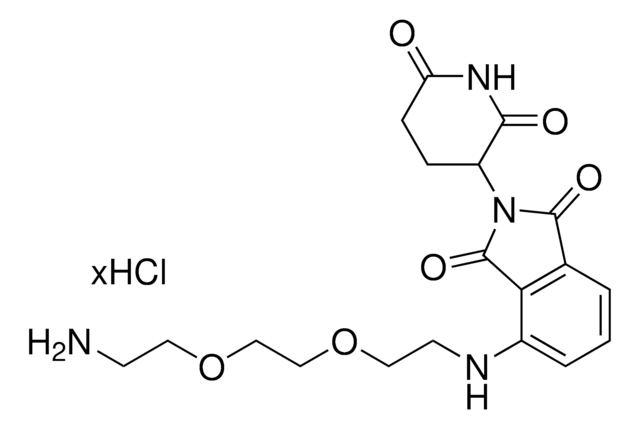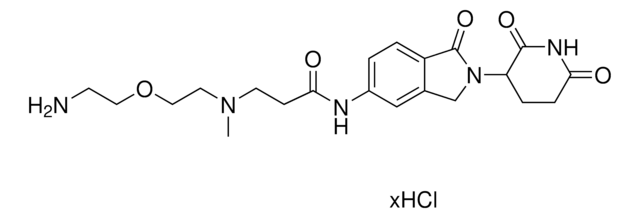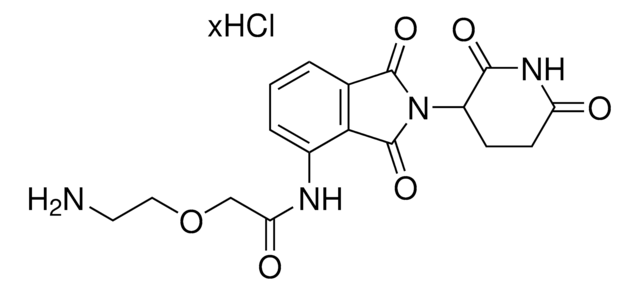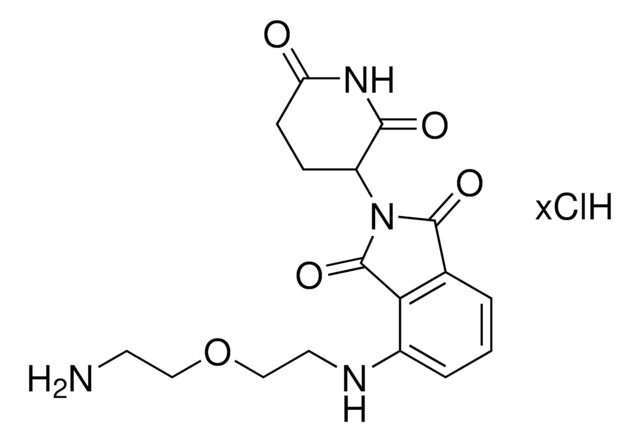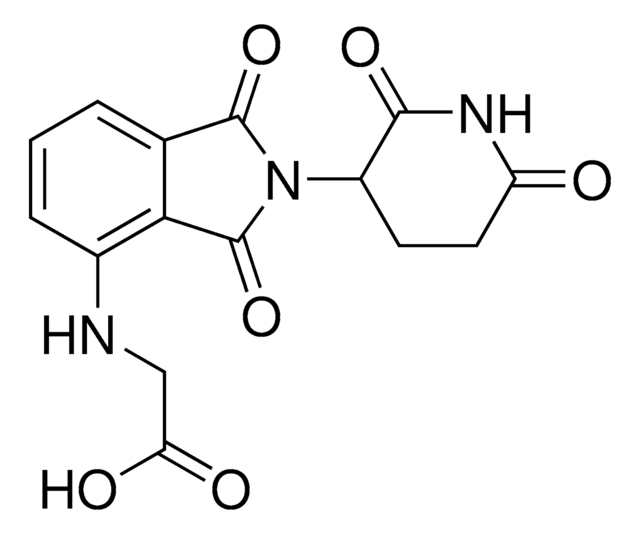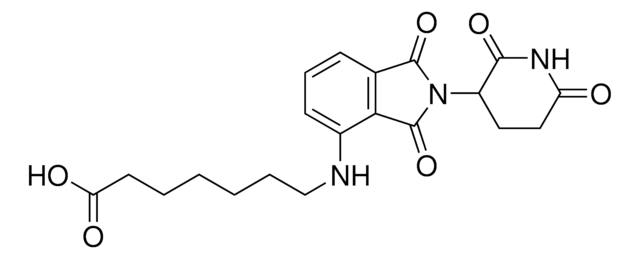Wichtige Dokumente
930652
Pomalidomide-C2-NH2 hydrochloride
≥95%
Synonym(e):
4-((2-aminoethyl)amino)-2-(2,6-dioxopiperidin-3-yl)isoindoline-1,3-dione hydrochloride, 4-[(2-Aminoethyl)amino]-2-(2,6-dioxo-3-piperidinyl)-1H-isoindole-1,3(2H)-dione, E3 Ligase Ligand 17
About This Item
Empfohlene Produkte
ligand
pomalidomide
Qualitätsniveau
Assay
≥95%
Form
powder
Funktionelle Gruppe
amine
Lagertemp.
2-8°C
SMILES String
O=C1NC(C(CC1)N2C(C3=C(C2=O)C(NCCN)=CC=C3)=O)=O.Cl
InChI
1S/C15H16N4O4.ClH/c16-6-7-17-9-3-1-2-8-12(9)15(23)19(14(8)22)10-4-5-11(20)18-13(10)21;/h1-3,10,17H,4-7,16H2,(H,18,20,21);1H
InChIKey
DSJCOXQYDMWPEY-UHFFFAOYSA-N
Anwendung
Technology Spotlight: Degrader Building Blocks for Targeted Protein Degradation
Protein Degrader Building Blocks
Sonstige Hinweise
Destruction of DNA-Binding Proteins by Programmable Oligonucleotide PROTAC (O′PROTAC): Effective Targeting of LEF1 and ERG
Small-Molecule PROTACS: New Approaches to Protein Degradation
Targeted Protein Degradation: from Chemical Biology to Drug Discovery
Impact of linker length on the activity of PROTACs
Rechtliche Hinweise
Lagerklassenschlüssel
11 - Combustible Solids
WGK
WGK 3
Flammpunkt (°F)
Not applicable
Flammpunkt (°C)
Not applicable
Hier finden Sie alle aktuellen Versionen:
Analysenzertifikate (COA)
It looks like we've run into a problem, but you can still download Certificates of Analysis from our Dokumente section.
Wenn Sie Hilfe benötigen, wenden Sie sich bitte an Kundensupport
Besitzen Sie dieses Produkt bereits?
In der Dokumentenbibliothek finden Sie die Dokumentation zu den Produkten, die Sie kürzlich erworben haben.
Unser Team von Wissenschaftlern verfügt über Erfahrung in allen Forschungsbereichen einschließlich Life Science, Materialwissenschaften, chemischer Synthese, Chromatographie, Analytik und vielen mehr..
Setzen Sie sich mit dem technischen Dienst in Verbindung.